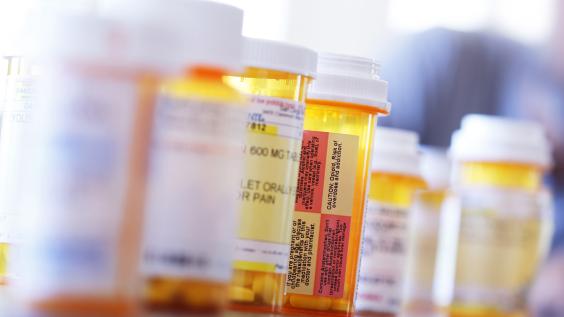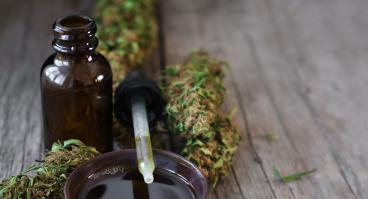Increased Treatment: Popular, Beneficial, Limited

Table of Contents
Author(s)
Drug policy has experienced an interesting shift recently. Along with legalization of medical and recreational marijuana, many states are also reducing penalties for nonviolent drug offenses and placing greater focus on treatment for drug users. The emphasis on treatment and rehabilitation for drug users is the result of many factors, including recognition that the drug war has not reduced drug use, a desire to reduce the prison population and save money, and a surge in the rate of overdoses from opioid and heroin use. What remains to be seen is whether the current popularity of drug treatment will become a more permanent feature of drug policy. In this Baker Institute Viewpoints series, five experts on drug policy examine the question, “Is the current emphasis on treatment in drug policy a short-term trend or is it here to stay?” The final commentary follows. Previous entries covered the stigma surrounding substance use, changing attitudes about the drug war and the user population, government support of treatment as a fiscal measure and financial barriers to treatment.
One of the few positive achievements of the failed 40-year war on drugs is that a majority of the public is open to alternatives to an excessive reliance on punishment, especially incarceration, as a means to reduce the harms of drug use and abuse. Treatment — as broad-ranging and nebulous as that term can be — offers the prospect of a more effective approach.
Good treatment can work. An oft-quoted RAND Corporation study estimated that “treatment is seven times more cost-effective than the domestic law enforcement method, 10 times more effective than interdiction and 23 times more effective than the ‘source control’ [crop eradication] method.”
A five-year study funded by the Substance Abuse and Mental Health Services Administration, part of the U.S. Department of Health and Human Services, assessed the impact of treatment on nearly 5,400 patients in publicly funded substance abuse programs in the U.S. “The study found that treatment led to significantly reduced substance use; lasting benefits a full year after treatment; increased employment and income; improved mental and physical health; decreased criminal activity; decreased homeless rates; and decreased at-risk behaviors for HIV/AIDS infections.”
Increased preference for treatment over incarceration also has bipartisan political support. In Texas, the right-leaning Texas Public Policy Foundation (TPPF) contends that treatment programs that keep offenders in the community rather than in prison cost far less, give offenders a better chance to maintain employment, and reduce recidivism. TPPF’s left-leaning counterpart, the Texas Criminal Justice Coalition, agrees with this argument but also stresses that drug abusers should be treated as people with an illness rather than as criminals.
Another key factor in assuring that the drug treatment trend will have staying power is that the Affordable Care Act (Obamacare) requires states that accept federal expansion of Medicaid and private insurers participating in the Health Insurance Marketplace to include treatment of mental health and “substance use disorder” (SUD) — an umbrella term for a wide range of problematic drug use — in their health plans, opening treatment to millions who have not been able to afford it.
As existing providers expand the number of patients and as new providers enter the field — perhaps from a desire to fill a genuine need, perhaps with recognition that there is money to be made in the drug treatment game — these developments seem likely to insure a growing availability of treatment. Unfortunately, in addition to sincere and competent entrepreneurs, a minority of treatment providers is likely to comprise miscellaneous zealots, quacks and charlatans. Let the buyer — individual, corporate or governmental — beware and perform due diligence when choosing among treatment options.
As we move toward greater use of treatment for substance use disorders, several observations are in order:
- Not everyone who violates a drug law needs treatment. Contrary to popular belief, most people who use any illicit psychoactive drug never develop a problem with it. Most people with a substance use disorder recover without treatment of any kind. But when substance abuse persists, there is broad consensus in the medical and scientific community that it should be viewed and treated as a medical and public health problem, not a crime. We already do that with the two-thirds of the drug problem that involves alcohol alone,1 although it causes more widespread personal and social harm than any other drug. It is time to enlarge that scope to include the less harmful drugs, such as marijuana. This, of course, would involve substantial changes in existing drug laws.
- A broad and growing consensus among experts holds that a sizable portion of SUDs — estimates tend to range between 40 and 60 percent — can be traced to genetically related mental illness or other forms of inherited vulnerability to addictive drugs. Environmental factors such as peer pressure, poor parenting and social isolation can push people toward substances that bring temporary relief and make it easier to relapse when trying to quit. Effective treatment should not shortchange these factors in favor of focusing on particular drugs.
- A major marker (or possibly a cause) of severe problems later in life is early use of any drug, usually alcohol or tobacco, with marijuana a common next option. For the most vulnerable, early addiction can rapidly follow early use. Those who actually become addicted at an early age are likely to have more severe problems later. According to some estimates, as many as 90 percent of people who have a drug problem after the age of 26 developed it before the age of 18. Therefore, a key to preventing serious drug problems is early detection. A joint statement by the American Federation of Teachers and the National Education Association noted that “Proper diagnosis can and often starts in our schools, yet we continue to cut funding for school counselors, school social workers and school psychologists.” In addition to funding for such positions, prevention also involves equipping teachers to recognize the signs of possible drug abuse and urging them to pay attention to who is smoking, drinking or perhaps groggy from prescription drugs. These are far more likely to cause or deepen addiction than marijuana, though marijuana can be quite harmful to adolescents, and no responsible reform advocate argues it should be made legal for minors. It also means counseling kids who are obviously troubled in other ways about the dangers of these drugs and providing them with accurate information rather than trying to scare them with claims they know to be inaccurate. Effective treatment can occur outside the realm of formal programs.
- Finally, people in treatment programs required by the terms of their probation who lapse back into drug use should not automatically be remanded to jail or prison, as is common in many law-mandated treatment regimes. Relapse is common for a majority of people who develop SUDs, even for those who eventually achieve permanent abstinence. Addiction can be tough to conquer and not all can conquer it. Further, as noted above, drug abuse is often a symptom of deeper problems that do not conveniently disappear simply because a person abstains from drugs for a period. When those who are seriously trying to achieve sobriety slip back into old habits, their treatment has not necessarily been a failure. They have been off drugs for a while and have seen that sobriety is possible. They may well do better on subsequent tries. Partial and incremental success is decidedly preferable to the tragic failures of mass incarceration.
1. See Figure 7.1 in “Results from the 2013 National Survey on Drug Use and Health: Summary of National Findings,” U.S. Department of Health and Human Services, September 2014, http://www.samhsa.gov/data/sites/default/files/NSDUHresultsPDFWHTML2013/Web/ NSDUHresults2013.pdf.
William Martin, Ph.D., is the Harry and Hazel Chavanne Senior Fellow in Religion and Public Policy at the Baker Institute and the Chavanne Emeritus Professor of Sociology at Rice University. He also directs the institute’s Drug Policy Program. His articles have appeared in such publications as Texas Monthly, The Atlantic Monthly and Harper’s, as well as in professional journals. He received his Ph.D. from Harvard University in 1969.
This material may be quoted or reproduced without prior permission, provided appropriate credit is given to the author and Rice University’s Baker Institute for Public Policy. The views expressed herein are those of the individual author(s), and do not necessarily represent the views of Rice University’s Baker Institute for Public Policy.



